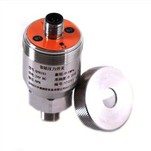Application of Linear Displacement Sensor in Bridge Inspection
Bridge engineering is an important aspect of national infrastructure construction, and an important link to connect local traffic and promote economic development. After the bridge is completed, due to the influence of factors such as load, climate, environment, vibration, cable force and stress changes, the structural materials of the bridge body will gradually be corroded and aged, and the strength and stiffness will gradually decrease.
Long-span bridges are more affected by the above factors, which will not only shorten the service life of the bridge, but also lay a great hidden danger for the personal safety of pedestrians. Therefore, the real-time monitoring of the health status of the bridge and the safety assessment based on this are an important part of daily maintenance.
With the progress of society and the development of technology, people have gradually introduced cutting-edge technologies such as sensor technology, computer technology, and communication technology into the bridge monitoring system, initially realizing automatic monitoring and early warning functions, and can be used for bridge structural damage and status for a long time. Evaluation, meet the needs of bridge maintenance management and operation, provide theoretical basis for scientific management of bridges, etc., while taking into account economic and social benefits. At present, the instruments used for bridge monitoring mainly include: theodolite settlement instrument, displacement sensor, acceleration sensor and other test methods.
Theodolites, subsidence meters and other highly integrated measuring instruments can continuously scan multiple measuring points of the bridge, and timely warn of some small cracks, displacement changes and other diseases. However, it is also difficult to detect synchronously at each measuring point, and it is impossible to warn of large deformation variables.
Linear displacement sensor is a contact type measuring instrument. When in use, the sensor is in direct contact with each measuring point. The sensor converts the displacement change into electrical signals in time and transmits it to the monitoring and control center. It realizes the synchronous acquisition, comparison and data storage of each measurement, which provides a scientific basis for scientific management and monitoring of bridge diseases. It can also transmit the signals collected by the system to the Internet. Many measuring instruments are used. However, most precision displacement sensors can only be measured by contact, and cannot be measured for some inaccessible observation points. Most of the lateral displacement changes of the bridge body are difficult to effectively monitor due to sensor installation problems.
Acceleration sensors are also partially used in bridge monitoring systems, but the measurement accuracy of acceleration sensors is low, and the measurement data needs to be processed to be converted into displacement values. The vibration frequency of large bridges is low, and it is difficult to ensure that the collected data will not be distorted.
No matter what instrument is used as the detection method, the bridge monitoring system should follow the principles of simplicity, practicality, economy and reliability. The monitoring points should be laid out according to the bridge structure and maintenance management needs, and the monitoring points should be closely related to the safety of the bridge structure.










